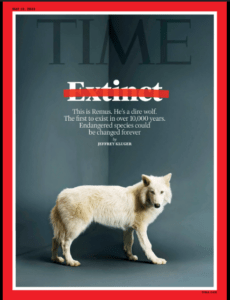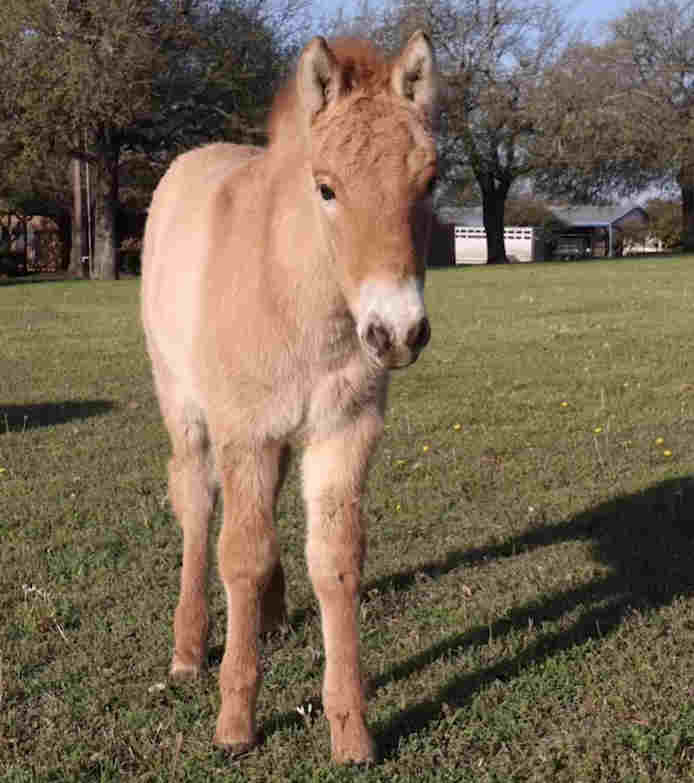UK Native Wildlife Conservation With the awarding of an amazing £16,000 grant provided by the…
Colossal Biosciences ‘Resurrects’ Dire Wolf

Colossal Biosciences ‘Resurrects’ the Long-Extinct Dire Wolf: A New Era for De-Extinction and Conservation?
In a ground breaking scientific development, Colossal Biosciences, a pioneering biotechnology company (Dallas, Texas), announced it has “resurrected” the dire wolf, an iconic canid species that roamed North America until its extinction over 10,000 years ago. On 7th April 2025, Colossal Biosciences announced that this achievement marks a significant milestone in the field of de-extinction.
The Science Behind the Resurrection – How Did They Do It?
Colossal Biosciences employed state-of-the-art gene-editing techniques to transform cells taken from living grey wolves into cells that exhibit the traits of the extinct dire wolf. By analysing ancient DNA extracted from a 13,000-year-old tooth from Ohio and a 72,000-year-old skull fragment from Idaho, scientists identified key genetic differences between dire wolves and modern grey wolves. Using CRISPR and other advanced editing tools, the team made 20 targeted edits across 14 genes in grey wolf cells. Edited cells were then used to generate embryos via somatic cell nuclear transfer (SCNT), which were finally transferred into surrogate domestic dogs. The result: three healthy “dire wolf” hybrid pups named Romulus, Remus, and Khaleesi.
Not Just Cloning
Unlike traditional cloning, which produces an exact genetic copy of an individual, this process was more transformative. Instead of inserting ancient dire wolf DNA directly into a grey wolf genome, the Colossal team introduced the critical gene variants that define dire wolves—traits such as a thicker, lighter coat, larger teeth and jaws, and a more robust build into the grey wolf’s genetic blueprint.
Dire Wolf vs. Grey Wolf: Understanding the Differences
While the dire wolf and the grey wolf share a common ancestry and similar appearances, they exhibit notable differences in physical characteristics, genetic lineage, and ecological roles.
Physical Characteristics
• Size and Build: Dire wolves were generally larger and more robust than grey wolves. They possessed a heavier, more muscular body, which contributed to their increased weight compared to the more slender and agile grey wolves.
• Skull and Dentition: The skull of the dire wolf was broader, equipped with larger teeth for larger shearing capacity, adapted for hunting large prey. In contrast, grey wolves have narrower skulls and smaller teeth, reflecting a versatile but less specialised prey selection.
• Limbs: Dire wolves had shorter and sturdier limbs, suggesting they were built for power rather than speed. Grey wolves, with longer and leaner limbs, are adapted for endurance and chasing down prey over longer distances.
Genetic Lineage
Despite their physical similarities, recent genetic analyses have revealed that dire wolves and grey wolves are not as closely related as once thought. They diverged from a common ancestor approximately 5.7 million years ago, but resulted in distinctly different evolutionary paths. This significant genetic separation means that, unlike grey wolves, dire wolves did not interbreed with other canid species. This is demonstrated by their unique gene variants, coat colour, muscle composition and craniofacial morphology.
Ecological Roles
As apex predators, both species played crucial roles in their respective ecosystems. Dire wolves primarily inhabited the Americas during the Pleistocene epoch, preying on megafauna such as horses and bison. Grey wolves have a more extensive range, occupying various habitats across the Northern Hemisphere and exhibiting adaptable hunting strategies that allow them to target a diverse array of prey species, indicating a less specialised role in today’s ecosystem.
Why It Matters: Conservation, Science, and Culture
A New Tool for Biodiversity Restoration
Proponents of de-extinction argue that technologies like these could one day serve as powerful tools for conservation. While critics point out that the revived animals are not “true” dire wolves but rather genetically modified grey wolves with dire wolf-like characteristics, the achievement does raise important questions about how we might help endangered species recover genetic diversity and bolster dwindling populations.
Ecological and Ethical Debates
The resurrection of the dire wolf has sparked debates among scientists and ethicists alike:
• Ecological Role: Will reintroducing a species (or something resembling it) help restore lost ecological functions? Dire wolves once were apex predators whose absence may have contributed to imbalances in ancient ecosystems.
• Species Identity: Some researchers caution that simply editing grey wolf DNA does not fully “de-extinct” the dire wolf; it produces a hybrid that shares superficial characteristics with the extinct species
• Ethical Responsibility: Developing technology comes with profound moral obligation to ensure animal welfare. Colossal Biosciences asserts that every animal involved in the process, from the surrogate dogs to the revived pups, has been cared for according to strict ethical protocols. The pups now reside in a secure 2,000-acre nature reserve, where their well-being is closely monitored. A notable aspect of their approach is the use of a less invasive blood draw method to derive endothelial progenitor cells, instead of relying on traditional tissue biopsies that yield fibroblast cells. These blood-derived cells are inherently less differentiated and more amenable to reprogramming during cloning or gene editing. This innovative advancement not only enhances the ethical standards of cloning technology but also supports improved outcomes in animal conservation.
The Broader Context of De-Extinction
While critics argue that reintroducing modified animals into today’s drastically altered landscapes might not recreate past ecosystems, supporters maintain that these efforts represent a critical step in exploring innovative ways to combat biodiversity loss in a time of rapidly changing climates. A peer-reviewed study detailing the methodology and findings of the dire wolf resurrection is expected to be published soon, which will help the scientific community further assess this revolutionary achievement and plans going forward.
Colossal Biosciences is not stopping at dire and red wolves. The company’s ambitious roadmap includes the eventual de-extinction of other iconic species such as the woolly mammoth, dodo bird, and the Tasmanian tiger (thylacine). By developing versatile, less-invasive cloning technologies, they envision a future where de-extinction could help restore lost genetic diversity and stabilise fragile ecosystems. The same cutting-edge technologies used to reintroduce traits of the long-extinct dire wolf have already been applied to support one of today’s most critically endangered species: the red wolf. In a less covered, but equally significant milestone, Colossal announced the birth of four red wolf pups using cells derived again from a simple, non-invasive blood draw, an innovation that may help secure the future of a species with fewer than 20 individuals left in the wild.
What Next?
Beyond the technical achievement, this work represents something deeper. At a time when climate change and biodiversity loss dominate global headlines, the revival of the dire wolf and the conservation of the red wolf serve as powerful symbols of what is possible. These animals demonstrate that through human ingenuity, we may not only halt extinction but begin to reverse it. For the next generation of scientists, conservationists, and innovators, this is an inspiring call to action. Watching what once seemed impossible become reality is a reminder that with the right tools and commitment, we can shape a future where biodiversity thrives.
To Find Out More.
To find out more on this announcement, visit https://colossal.com/direwolf/
and https://time.com/7274542/colossal-dire-wolf/



